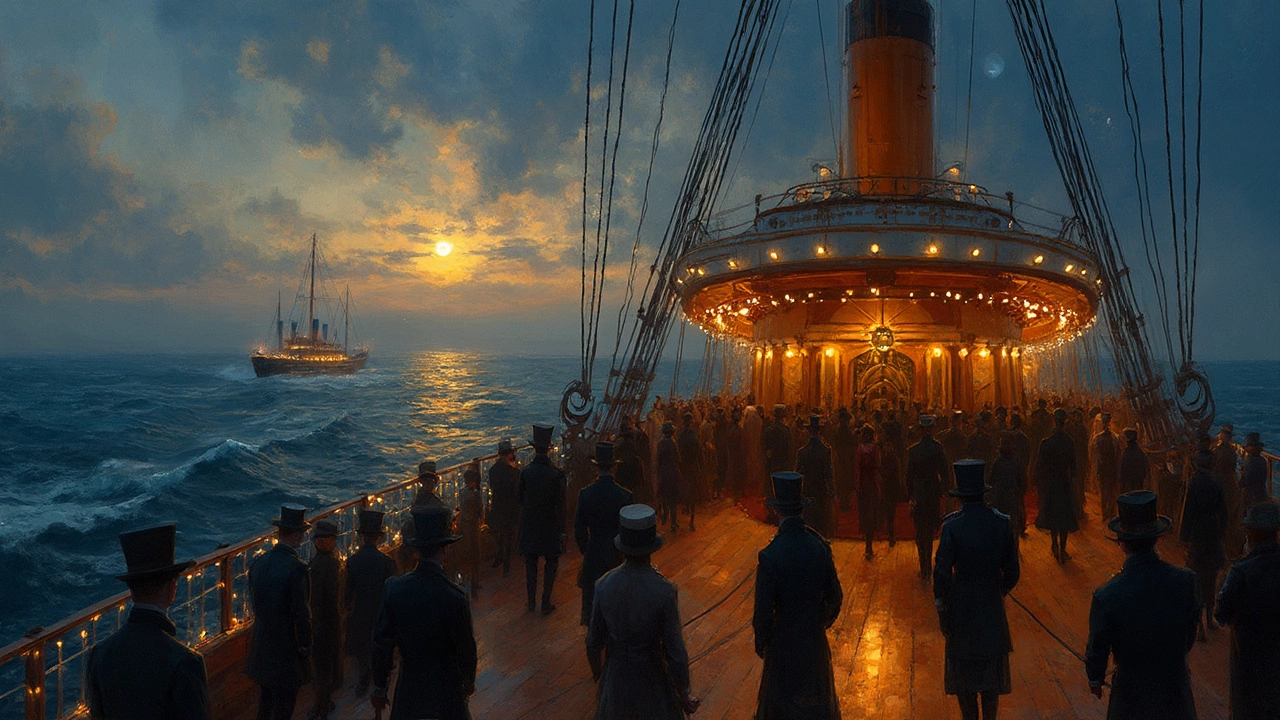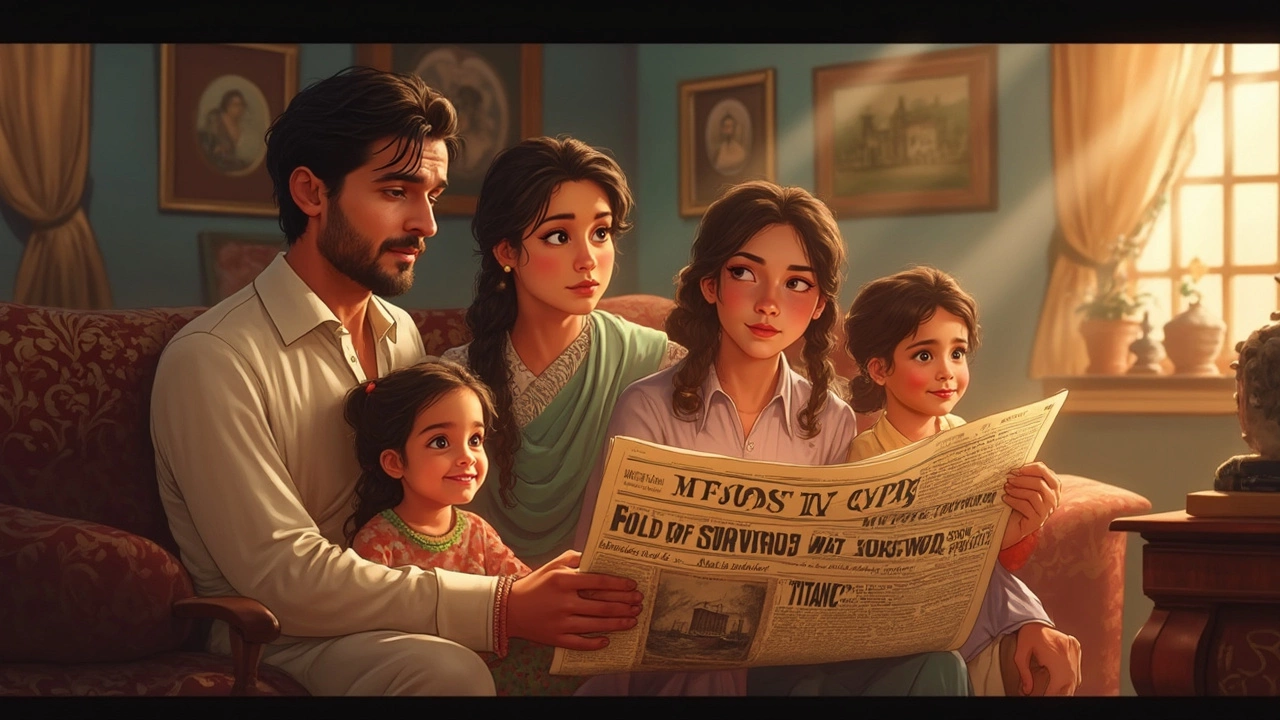Are Any Titanic Survivors Still Alive? Diving into the Historic Mystery
 Mar, 2 2025
Mar, 2 2025
Oops, just hit a fascinating question, haven't we? The RMS Titanic sank more than a century ago on April 15, 1912, after hitting an iceberg, a fact that seems as permanently etched in memory as it is in time. It carried more than 2,200 passengers and crew, with only about 700 making it out alive. But what about those survivors? Could any still be living among us today?
The simple answer is no, not anymore. The last living survivor, Millvina Dean, passed away in 2009. She was just a baby on that fateful night, but her legacy, like those of other survivors, remains a captivating chapter in history. Still, today's fascination with their stories shows how the Titanic continues to remain significant in our cultural narrative.
The Fateful Voyage
The story of the RMS Titanic is one that's been told through countless movies, books, and documentaries. Yet, something about the journey of this mighty ocean liner still captures our imaginations. So, why was Titanic considered unsinkable, and what happened on that infamous night?
The Titanic set sail from Southampton, England, on April 10, 1912. It was on a course for New York City, boasting unprecedented luxury and modern technology. This included advanced safety features like watertight compartments and remotely activated watertight doors, which, ironically, contributed to the belief in her being unsinkable.
Accounts of Survival also revealed much about the ship's tagline. On April 14, just four days into the voyage, the Titanic struck an iceberg at around 11:40 PM. The iceberg scraped along the starboard side, opening the hull to icy waters. The damage was done quickly and fatally.
Collision Consequences
The ship's crew realized too late the extent of the disaster—the Titanic was doomed. Distress signals were sent, but few ships were nearby. The closest, RMS Carpathia, was about 58 miles away and responded immediately but would arrive too late to prevent the tragedy of seeing only the lifeboats and their occupants.
- The tragic outcome was compounded by insufficient lifeboats, only enough for about half the passengers.
- Panic and chaos reigned as people rushed to evacuate, adhering to the 'women and children first' protocol.
Through this chaos, there arose stories of heroism and sacrifice by both crew and passengers, some staying behind to let others evacuate first, all while the realization of the looming disaster sank in, just as the ship did beneath them.
Aftermath and Repercussions
The Titanic's sinking raised public and governmental alarms worldwide, leading to significant changes in maritime laws. The North Atlantic ice patrol was established, international treaties mandating lifeboat space for all onboard were enacted, and radio operations became mandatory, ensuring 24-hour vigilance.
Accounts of Survival
Now, let's dig into the gripping realities faced by the Titanic survivors. These folks experienced a harrowing ordeal, and each story adds a piece to the legendary jigsaw puzzle that is the Titanic's history.
The Night of Chaos
Survival was mostly a game of chance and tenacity. Many stories share a common theme: thinking quickly and making snap decisions. People remember the bravery displayed by crew members like Charles Lightoller, the ship's second officer. He was responsible for launching lifeboats and even found room on an overturned collapsible lifeboat, ultimately surviving the icy waters. His leadership potentially saved many lives.
Women and Children First
The call of "women and children first" set the tone for many of the survival accounts. Consider Molly Brown, famously known as "The Unsinkable Molly Brown." She didn't just sit idly in the lifeboat; she rallied others to row and search for survivors. Talk about keeping a level head!
A Celebrity Among Survivors
Eva Hart, only seven at the time, left a lasting legacy with her vivid accounts of that night. She remembered her mom's intuition that "something was wrong," prompting her family to be among the first on the lifeboats. Her recollections and public speeches later in life helped preserve an authentic glimpse into Titanic's dark hours.
These accounts showed a mix of tragedy and triumph. It's fascinating how personal strength and luck intertwined that night.

Last Witnesses
It's quite something to think about the Titanic survivors as the last human links to such a monumental historical event. The very last of these witnesses, Millvina Dean, truly closed a historical chapter when she passed away on May 31, 2009. Millvina was just two months old when the Titanic sank, making her experiences second-hand through family stories, yet she played an important role in keeping the history alive.
Another notable name is Eva Hart, a seven-year-old on that voyage, whose survival story is quite gripping. She vividly recalled the sights and sounds of the disaster into her old age, providing a valuable, albeit chilling, first-hand account. Her memories have helped color our understanding of that fateful night, offering a personal peek into the chaos and terror.
Titanic history has been preserved through these witnesses. People like Charles Lightoller, the most senior crew member to survive, shared detailed testimonies that aided in transforming legends into learned facts. His resources were instrumental during inquiries, adding layers to our perception of how events unfolded.
And let's not forget those whose post-Titanic life stories are just as compelling. Margaret "Molly" Brown, famously known as "The Unsinkable Molly Brown," wasn't just a survivor, she became a heroine. Her courageous actions, rallying fellow passengers to row lifeboats and sustaining spirits, have rightfully become part of maritime folklore.
These witnesses didn't just live through history; they helped shape it for future generations. Their stories, recorded through interviews, books, and countless documentaries, keep the Titanic close in our collective memory. Through their accounts, we stay connected to this distant, yet ever-present, moment in time.
Legacy and Lessons
When you think of the Titanic, it’s not just the sinking you'll remember, but also what we learned from such a colossal disaster. The storm of regulations and safety measures that followed is a testament to the resilience and innovation born out of tragedy.
Building a Safer Future
In response to the tragedy, the International Convention for the Safety of Life at Sea (SOLAS) convened in 1914. It set minimum safety standards in the construction, equipment, and operation of ships. One big change was the requirement for enough lifeboats for everyone on board, a seemingly obvious necessity that wasn't a mandate before the Titanic disaster.
Cultural Impact
The story of the Titanic and its survivors quickly became part of popular culture, inspiring books, films, and countless discussions. People are drawn to the drama of human endurance and the vivid lesson on the dangers of hubris. Novelist Walter Lord summed it up well:
"The sound of the Titanic hitting the iceberg is still echoing around the world."
Lessons in Innovation
On a technical level, the Titanic’s sinking prompted advances in ship design and safety protocols. Changes included double hulls and higher bulkheads to make ships unsinkable—or as close as you can get. More modern communication systems came into play too, ensuring that emergencies could be dealt with more efficiently.
Legacy Statistics
While Titanic didn't have a successful maiden voyage, it did accomplish one thing: it paved the way for safer sea travel. Below is a simple summary of what changed:
| Aspect | Pre-Titanic | Post-Titanic |
|---|---|---|
| Lifeboat Capacity | Not enough for all | Enough for every passenger and crew |
| Radio Communication | Optional | Continuous and mandatory |
| SOLAS Convention | N/A | Established in 1914 |
With all of these lessons learned and measures implemented, the legacy of the Titanic lives on—not as a warning of failure, but as a guide towards safer and more thoughtful approaches to challenges, not just in maritime travel, but in all endeavors of human progress.